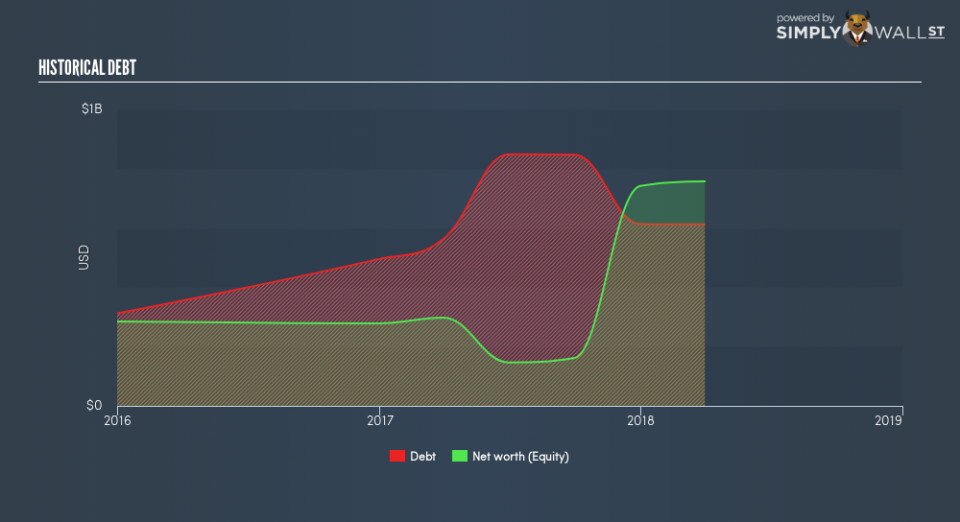What You Must Know About Switch Inc’s (NYSE:SWCH) Financial Strength

Small-caps and large-caps are wildly popular among investors; however, mid-cap stocks, such as Switch Inc (NYSE:SWCH) with a market-capitalization of US$3.49b, rarely draw their attention. While they are less talked about as an investment category, mid-cap risk-adjusted returns have generally been better than more commonly focused stocks that fall into the small- or large-cap categories. SWCH’s financial liquidity and debt position will be analysed in this article, to get an idea of whether the company can fund opportunities for strategic growth and maintain strength through economic downturns. Note that this information is centred entirely on financial health and is a top-level understanding, so I encourage you to look further into SWCH here.
View our latest analysis for Switch
How much cash does SWCH generate through its operations?
SWCH’s debt levels surged from US$563.20m to US$612.24m over the last 12 months – this includes both the current and long-term debt. With this rise in debt, SWCH currently has US$238.56m remaining in cash and short-term investments for investing into the business. Moreover, SWCH has generated cash from operations of US$141.10m over the same time period, resulting in an operating cash to total debt ratio of 23.05%, signalling that SWCH’s current level of operating cash is high enough to cover debt. This ratio can also be interpreted as a measure of efficiency for loss making companies as traditional metrics such as return on asset (ROA) requires a positive net income. In SWCH’s case, it is able to generate 0.23x cash from its debt capital.
Does SWCH’s liquid assets cover its short-term commitments?
With current liabilities at US$79.01m, it seems that the business has been able to meet these commitments with a current assets level of US$265.91m, leading to a 3.37x current account ratio. However, a ratio greater than 3x may be considered as too high, as SWCH could be holding too much capital in a low-return investment environment.
Does SWCH face the risk of succumbing to its debt-load?
With a debt-to-equity ratio of 80.82%, SWCH can be considered as an above-average leveraged company. This is not unusual for mid-caps as debt tends to be a cheaper and faster source of funding for some businesses. However, since SWCH is presently unprofitable, there’s a question of sustainability of its current operations. Running high debt, while not yet making money, can be risky in unexpected downturns as liquidity may dry up, making it hard to operate.
Next Steps:
SWCH’s debt and cash flow levels indicate room for improvement. Its cash flow coverage of less than a quarter of debt means that operating efficiency could be an issue. However, the company will be able to pay all of its upcoming liabilities from its current short-term assets. Keep in mind I haven’t considered other factors such as how SWCH has been performing in the past. I recommend you continue to research Switch to get a better picture of the stock by looking at:
Future Outlook: What are well-informed industry analysts predicting for SWCH’s future growth? Take a look at our free research report of analyst consensus for SWCH’s outlook.
Valuation: What is SWCH worth today? Is the stock undervalued, even when its growth outlook is factored into its intrinsic value? The intrinsic value infographic in our free research report helps visualize whether SWCH is currently mispriced by the market.
Other High-Performing Stocks: Are there other stocks that provide better prospects with proven track records? Explore our free list of these great stocks here.
To help readers see past the short term volatility of the financial market, we aim to bring you a long-term focused research analysis purely driven by fundamental data. Note that our analysis does not factor in the latest price-sensitive company announcements.
The author is an independent contributor and at the time of publication had no position in the stocks mentioned. For errors that warrant correction please contact the editor at editorial-team@simplywallst.com.

